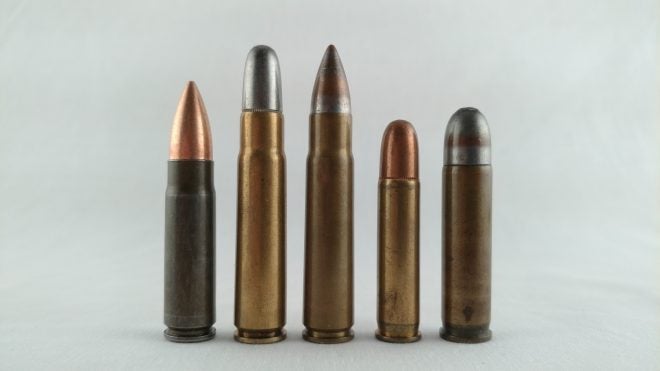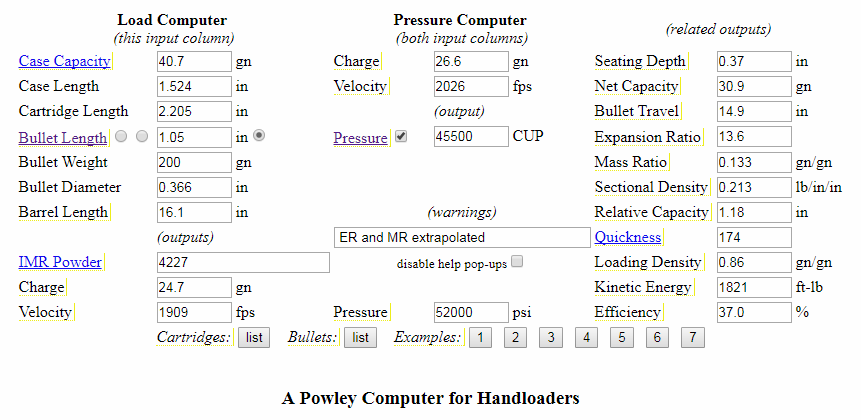Previously, we compared the Russian 9x39mm subsonic sniper round to its Western counterparts, including the .300 AAC Blackout and the .45 ACP. As it stands now, the 9x39mm is a subsonic round only – no supersonic loads exist for it currently. But… What if they did?
With the prospect of 9x39mm ammunition making it to the United States along with brand new AR-15 rifles chambered to fire it, it’s worth taking a closer look at what the round has to offer beyond just a large subsonic projectile. In particular, the 9x39mm holds significant promise if mated with existing 6.5 Grendel bolts and a comparable operating pressure to that round, about 52,000 PSI. At this pressure level, the 9x39mm is capable of propelling heavy projectiles at high enough muzzle velocities to add a significant large game capability to the AR-15 rifle family. In the title card image, we see the 9x39mm alongside the .35 Remington, .351 Winchester Selfloading (WSL), and .401 WSL. The .35 Remington and .401 WSL were each considered effective against black bear and other large game animals, and the .35 Remington in particular persists to this day as a niche lever-action round that is popular in the Northeast for use on everything from deer to black bear and elk, at short ranges.
The classic .35 Remington load fires a 200gr soft point projectile at just over 2,000 ft/s from a 24″ test barrel, but most AR-15s these days have barrels a little over 16″ in length, in accordance with federal law. So, 200grs at 2,000 ft/s from a 16″ barrel at 52,000 PSI… Can the 9x39mm do that? Let’s take a look:
Signs point to “yes”. Note that the case capacity and projectile length were derived from SolidWorks models.
A simple Powley calculation isn’t the last word of course, but it does bode well for turning the 9x39mm from a subsonic blaster to a supersonic moose annihilator. For a short-range caliber like this, ballistics graphs like we’re used to here on MIC are probably unnecessary. However, it is helpful to know what the expansion ranges might be for bullets at this weight. Assuming a 200gr flat based pointed soft point with an 0.193 G8 ballistic coefficient at a launch velocity of 2,026 ft/s, we find a retained velocity of 1,781 ft/s at 100 meters, and 1,549 ft/s at 200 meters. This means that at 100 meters and in, the 9x39mm should still cause bullets with an expansion velocity of about 1,800 ft/s to expand, while for bullets with an expansion velocity of about 1,500 ft/s 200 meters is close to the limit. This is good performance for a short distance round; for comparison the .35 Remington retains 1,655 ft/s at 100 meters and 1,315 ft/s at 200 meters.
However, that’s not all the 9x39mm can do, either. With even lighter bullets, it could reproduce the ballistics of the .30-30 and 7.62x39mm, out to short ranges. 150gr is probably the lightest weight bullet you’d want to use with the 9x39mm, but at that weight the 9x39mm would probably make a pretty dandy 200 meter whitetail round, especially if a properly expanding tipped monolithic hollow point bullet were used, similar to the Barnes VOR-TX.
Like many out there, I’m pretty excited to see the 9x39mm round come to the US market, but I think it would be a shame if the round’s full potential as an all-purpose micro-length action hunting round were left on the table at the same time.
 Your Privacy Choices
Your Privacy Choices

